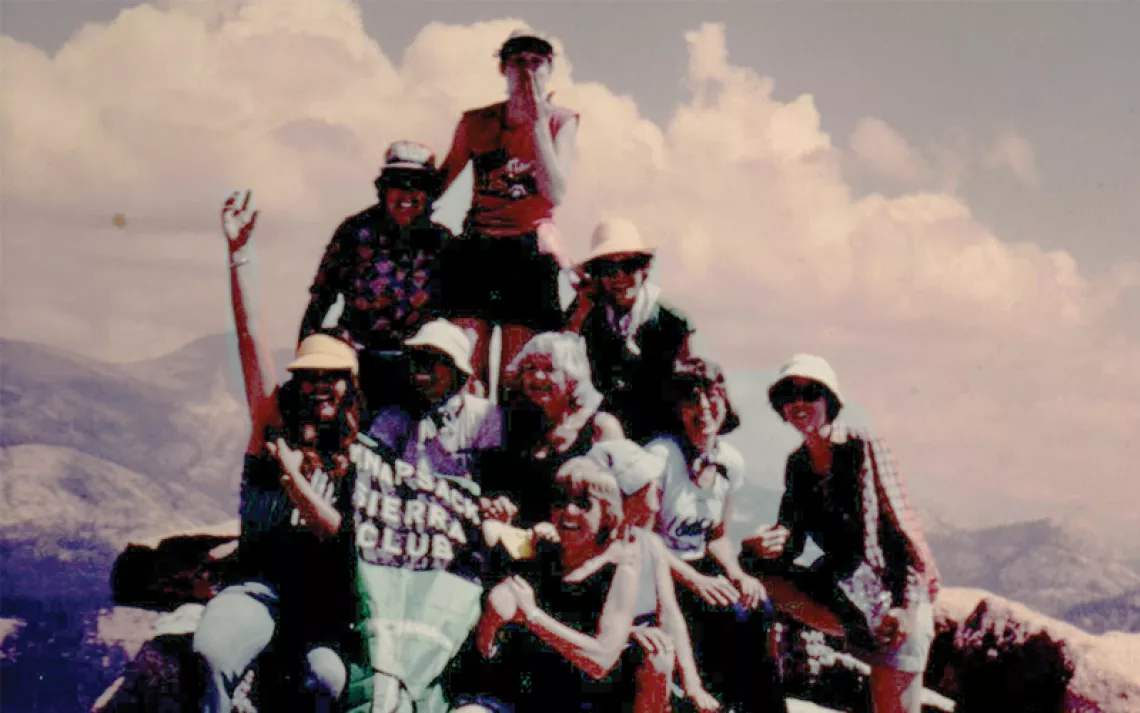Cold-Weather Carpe Diem: Adventure Like Polar Explorer Eric Larsen
The record-setting ranger reveals his go-to gear and hacks for surviving winter
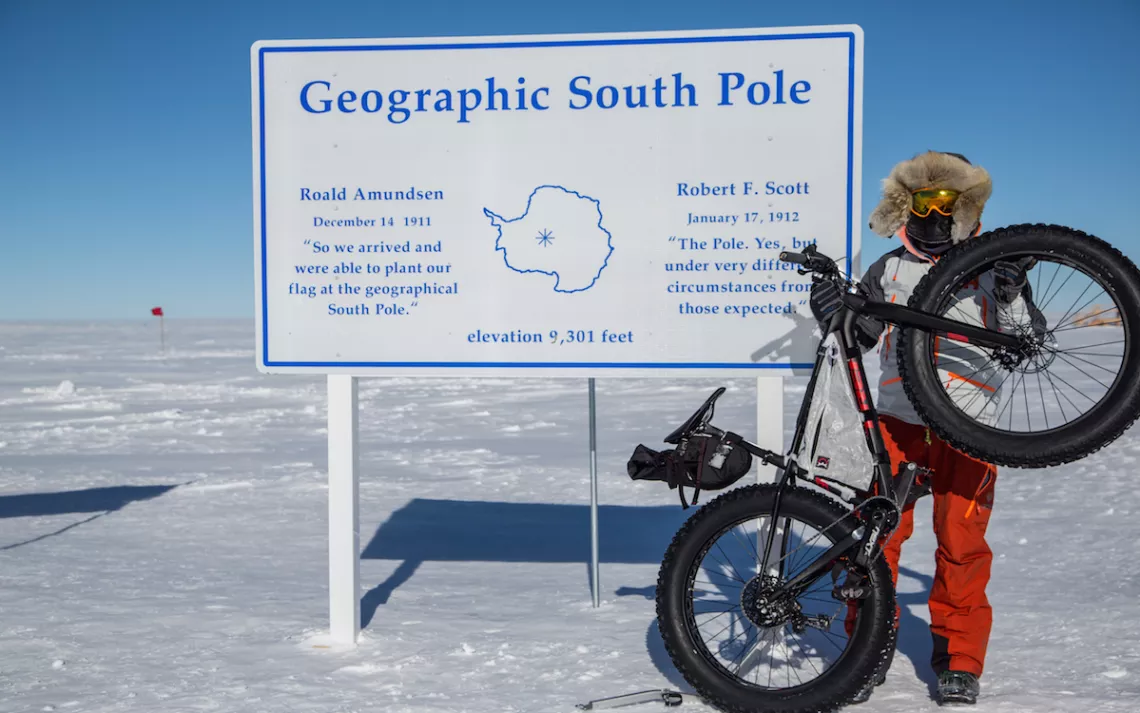
Photos courtesy of Eric Larsen
So far, 2018 has kept much of the country shivering. The last choruses of "Auld Lang Syne" swiftly gave way to record-low temperatures throughout the country—not to mention the East Coast’s dreaded bomb cyclone, the sub-50-degree wind chills plaguing North Dakota and Minnesota, and the snowstorms pummeling states as far south and sunny as Florida. The bitter cold shows few signs of relenting—and as any outdoor-loving adventurer can attest, you can only hole up with hot cocoa for so long.
When it comes to getting out there and braving those Arctic blasts, it pays to take cues from the only person to ever summit the North Pole, the South Pole, and Mount Everest within a single year. For the past 15 years, Eric Larsen has made a name for himself as a polar explorer, expedition guide, dog musher, educator, and conservation advocate. Suffice to say, Larsen knows a thing or two about planning and executing human-powered expeditions through the wildest and most remote of winterscapes.
When he’s not out exploring the world and teaching cold-weather adventure courses in Canada, Antarctica, and beyond, the father of two and Wisconsin native calls Boulder, Colorado, home. Seeking cold-weather savoir faire and hacks for staying warm, Sierra recently called up Larsen for the polar explorer’s winter-adventure pro tips.
First things first: Make sure your base-layer game is strong.
“What most people don’t realize is that when it’s 30 to 40 degrees below zero, the concern isn’t about getting too cold, but rather getting too hot,” Larsen cautions. “When you sweat, moisture builds up and can replace the layer of air next to your skin.” Hence, the importance of a close-fitting base layer made from moisture-wicking fabric that allows for ventilation. Larsen prefers the wide range of base layers available through Norwegian technical outfitter Helly Hansen. “They make a variety, and I layer up and down depending on the temperature and the activity. For polar expeditions, they have a great line of mountain apparel.”
Get down with down.
Larsen describes a big down jacket as his “last defense against really cold weather—whether you’re in a sub-zero-degree tent or just walking around town.” He explains, “It’s the lightest-weight and warmest of insulators,” and says he relies on Helly Hansen’s shell jackets. “They use Allied Feather & Down, which is sustainably harvested.”
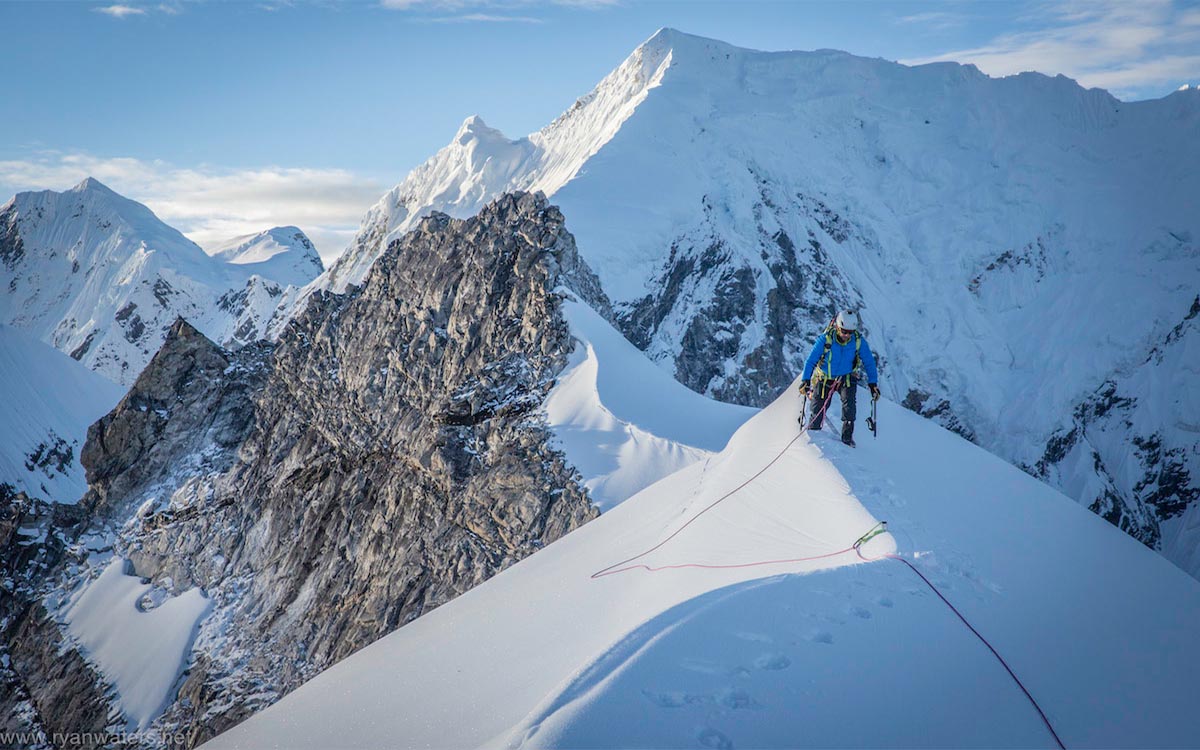 Zip your coat, and keep your hood up!
Zip your coat, and keep your hood up!
While hats and gloves are key, Larsen points out that it’s most important to keep the body’s core warm. “I hear people complaining about getting cold, and then I’ll see their jackets unzipped. You want to seal in heat and boost your metabolism, and from there, keep moving around, and add more layers as needed.” For head gear, Larsen recommends starting with a good balaclava and stacking one to two additional hats and neck buffs, as needed. “Keep your systems lightweight, so you can modify.”
Build a good foundation, too.
Waterproof boots are a no-brainer. Beyond that, Larsen is pretty passionate about socks. “Start with a lightweight, wicking layer, and build up to a heavier weight,” he says. “But don’t put on so many that they shut off circulation to your feet!” He explains that feet sweat a lot, which is why they require vapor barriers during polar (and polar-esque) expeditions. “You want to find ways to shield them that won’t add extra bulk.” To that end, Larsen offers a hack that’ll also help extend the life of the dreaded single-use grocery bag. “If it’s really cold, I’ll wear plastic grocery bags over my feet next to my skin, put a light liner over that, and then another bag, followed by a big sock.”
For standing rather than walking (or expeditioning) in a winter wonderland, Larsen recommends cutting up a Therm-a-Rest RidgeRest sleeping pad. “I’ll stand on chunks of it to further insulate my feet from the snow,” he says. “I had a client in Antarctica who used RidgeRest chunks as added insulation in his boots, too.”
Shelter wisely.
When pitching a tent, avoid windy hilltops and cold valleys. “Choose a flat site, compress any snow with your feet before setting up camp, and pitch with the door perpendicular to the windflow,” advises Larsen, who collaborated with the engineers at MSR to design a series of winter-grade tents—the Remote and Access lines—for ski tours, shoeshoeing, and all other manner of chilly adventures.
Sleep solutions are critical.
Sleep is so critical, in fact, that Larsen reached out to the camping-gear experts at Therm-a-Rest to help develop a sleeping bag to suit his extreme-temperature lifestyle. “Aside from polar bears, my primary worry at night is warmth,” says Larsen. “Having the right sleep system can mean life or death.” Therm-a-Rest’s new-for-2018 Polar Ranger -20F/-30C bag boasts heat-trapping technology in the form of side vents, a snorkel hood that’s designed to keep condensation from chilling on your face, quilt and blanket loops for extra layering, connectors to integrate bag with mattress, and a “toe-asis” pocket designed to warm cold feet. “These nice little features are critical,” says Larsen, who advises playing with your gear before heading out into the snow and ice. “It’s not just about having the right gear—it’s about knowing how to use it.”
Sometimes, Larsen even layers sleeping bags. “I’ll put the minus-20 Polar Ranger inside another bag. It keeps the bag extra dry and adds another layer of insulation.” Plus, winter’s hallmark layer of frost will form farther from your skin, on the outside bag. “Lots of companies make minus-40-degree bags, but I actually think a minus-20 bag with another on top is warmer and more versatile.” In the same vein, Larsen recommends doubling down on sleeping pads. “You lose a lot of body heat through conduction—that’s when your feet or body touch the ground—so doubling up further insulates your body.”
Snuggle up even cozier with one more Larsen sleep hack: “I’ll take a Nalgene bottle or anything with a lid, fill it with hot water, and keep it with me in my sleeping bag all night.”
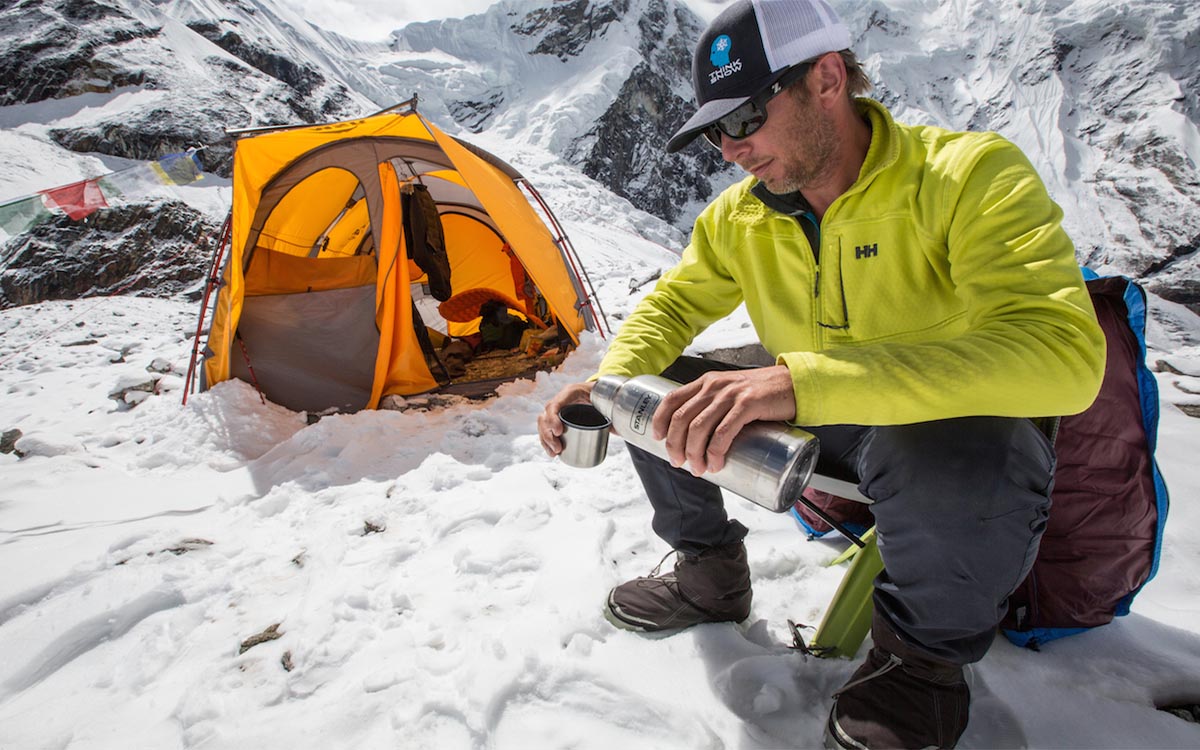 Stay hydrated.
Stay hydrated.
Noting that it’s actually easier to become dehydrated during winter than it is during summer—"People aren’t thinking about their water intake when it’s super cold"—Larsen advises keeping water warm, accessible, and unfrozen. To that end, he uses a variety of thermoses and insulated flasks to tote hot water along on adventures (often mixing in Skratch Labs Hydration formulas for added boosts of hydration and energy), and he heartily advocates for soup consumption. “I love to eat it halfway through the day,” Larsen says. “It’s great for hydration, and if you’re a little resource-depleted, it gives you some salt and fat. And from a more philosophical angle, looking forward to a warm meal when it’s minus 40 degrees out can provide a huge morale boost.”
Nourish strategically.
On cold-weather expeditions, you’ll want to take your gloves off as infrequently as possible—meaning you won’t have the warm-weather luxury of rooting around your pack or bear canister for that preferred flavor of trail mix or energy bar. “I love Granite Gear’s selection of bright-colored stuff sacks and zippered pouches. They make it easy to portion food ahead of time and organize it by color,” says Larsen, noting that cheese and many other trail staples tend to freeze solid, making provisions near impossible to cut on the go. “Slice up the right amounts to eat throughout the day beforehand,” he stresses. “I’ve even sewn pockets into my base layer just to hold my energy bars closer to my body, so they don’t freeze solid.”
Most important: Think warm, fuzzy thoughts.
Anyone who’s climbed a mountain or competed in a trail race knows well that mindset can be every bit as crucial to success as rigor in training. Same goes for braving the cold. “If you think you’re going to get cold, then you will,” Larsen says, noting that mindfulness is key to winter adventuring. “You need to continuously monitor your body and the environment, checking in with yourself about how much you need to eat, layer, prepare, and push yourself.”
And don’t let the cold scare you off! Larsen—who clearly lives by his long-held belief that adventure is the strongest springboard to connect people to issues around climate change, extraction, and preservation—promises that there’s a certain magic to cold-weather expeditioning. “For me, human-powered winter travel affords a slow, deliberate way to understand a place,” he says. “There’s nothing quite like seeing someplace like the Arctic unfold slowly and spending the time to interact with it on an intimate level.”
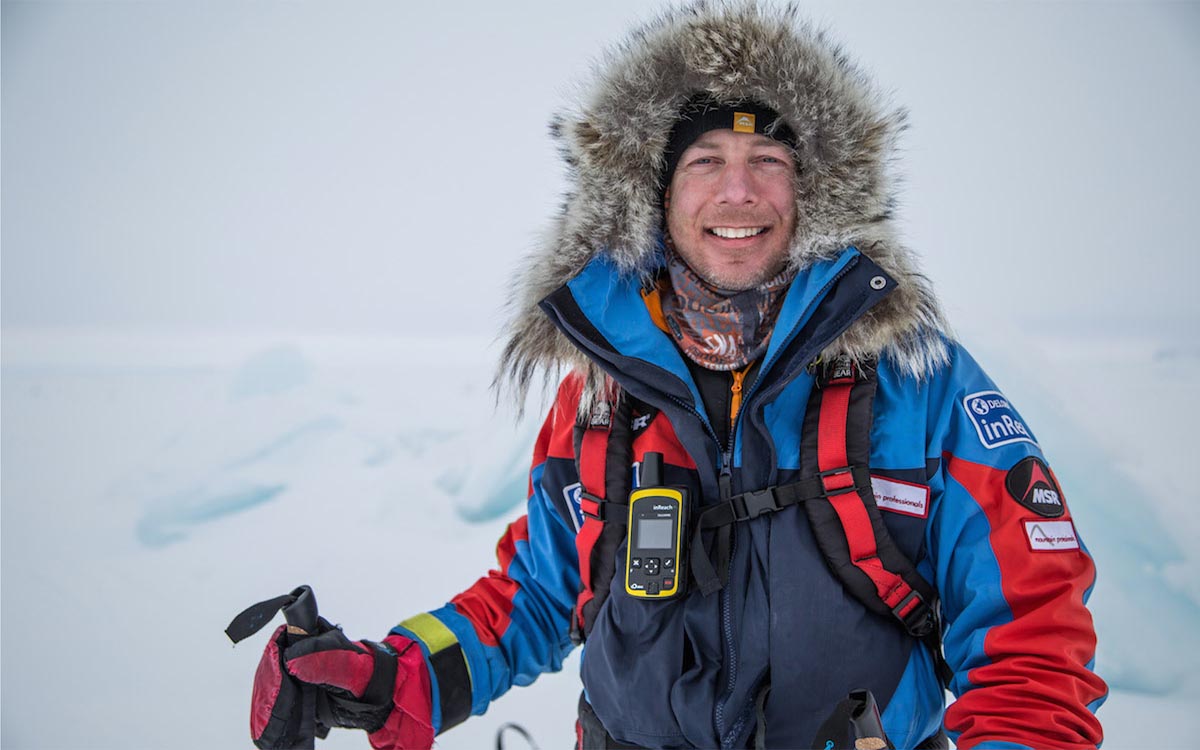
 The Magazine of The Sierra Club
The Magazine of The Sierra Club

